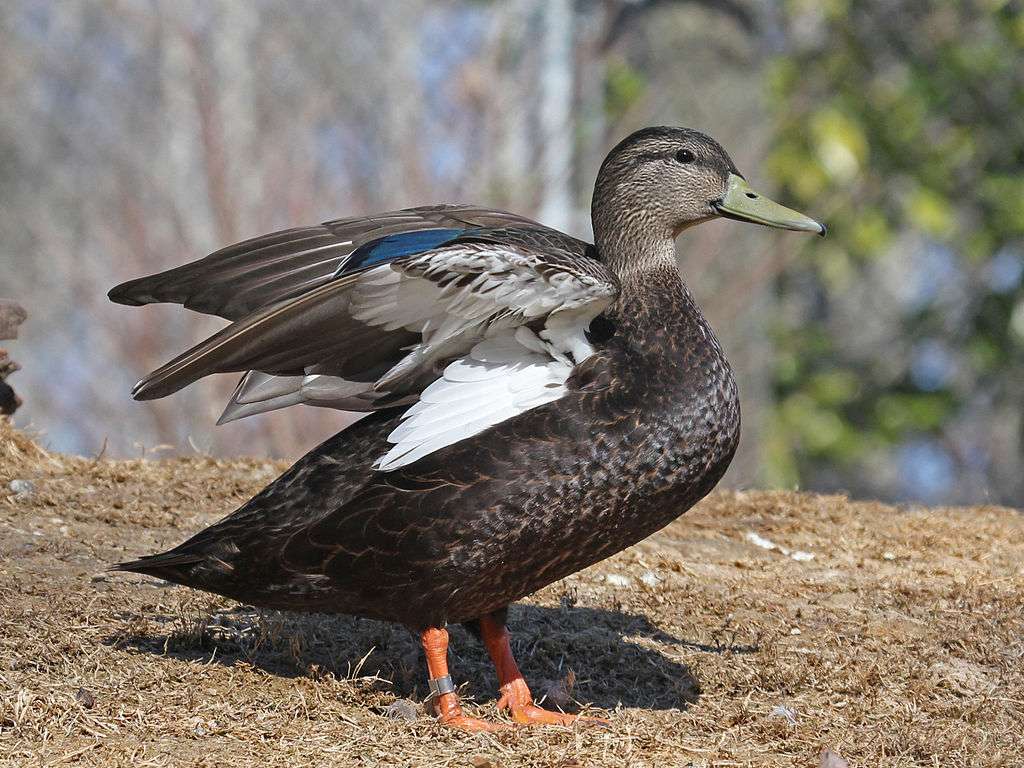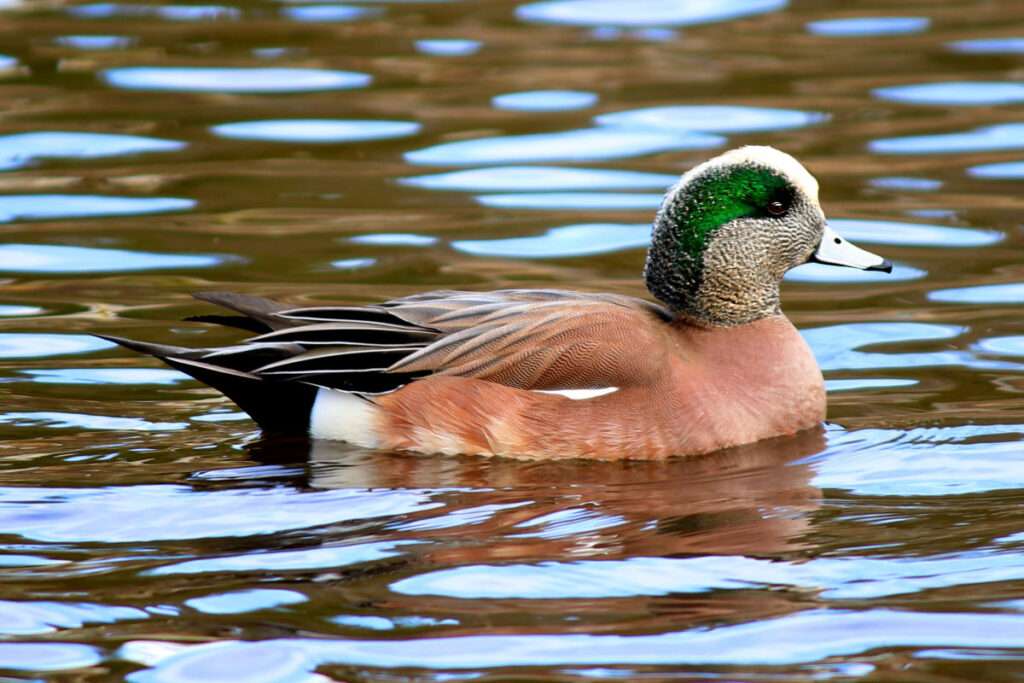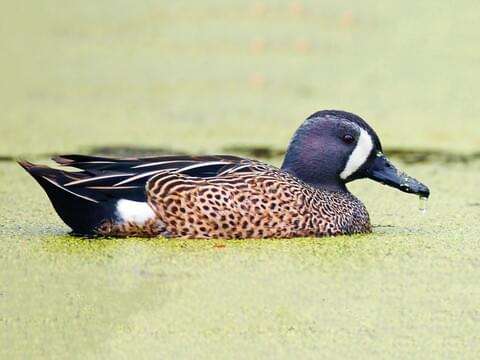
The northern shoveler is a widespread and ubiquitous duck that is simply referred to as the shoveler in Britain. The majority of North America, the Palearctic, and northern Europe are where it breeds.
Fun Facts
- A female Northern Shoveler frequently urinates on her eggs after being flushed off the nest, ostensibly to ward off predators.
- Since they are monogamous, Northern Shovelers stay together longer than most other pairs of dabbling ducks. On the wintering grounds, they form alliances and stick together until just before the fall migration.
- The Northern Shoveler has a large, shovel-shaped bill that is about 2.5 inches long. Along the sides of this oddly formed bill, however, are about 110 little projections known as lamellae that function as a colander to filter out small crustaceans, seeds, and aquatic invertebrates from the water.
Description
The huge spoon-shaped bill of the northern shoveler, which widens near the tip and assumes a morphology unique to North American ducks, may be the most obvious way to identify this duck. Male northern shovelers have a white chest and breast, a chestnut belly, and a neck that is iridescent green. The gray-brown back also has a white line that wraps around the border from the breast. The flank patches are white as well. The wings have a gray-blue shoulder patch between a vivid green speculum and a thin white line. In the breeding plumage, the bill is black, while the legs and feet are orange. The body of female northern shovelers is speckled with brown, and their heads are light brown with a blackish crown. The top wing coverts are grayish-blue, the secondaries are brown with a little greenish sheen, and the bigger secondary coverts are white-tipped. The bill has a fleshy orange border around the gape and black specks all over it. Its color is olive green.

Predators
Red foxes, raccoons, owls, hawks, great gulls, mink, weasels, skunks, coyotes, and crows are some of the common predators of waterfowl in North America.
Diet
Varies depending on the environment and the season. May eat largely seeds and other aquatic plant parts throughout the winter, such as sedges, pondweed, grasses, and others. Additionally consumes mollusks, insects, crabs, and occasionally tiny fish (particularly in the summer).
Habitat
Ponds and marshes; in the winter, salt bays as well. In the summer, near shallow water, in an area of open land like a prairie, marsh, or tundra. On alkaline lakes, fresh marshes, tidal estuaries, or any shallow water with large muddy edges, including stagnant or dirty waters not greatly preferred by other ducks, throughout migration and during the winter months.
As Pet
They cannot exist in the environment that humans can create for them so that they are not suitable to keep as pets.
Table





